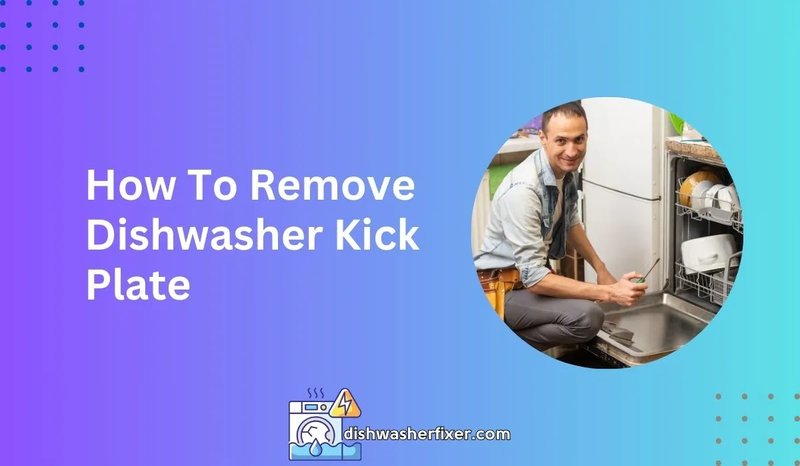
Kick plates, especially on popular appliances like Whirlpool dishwashers or those painted wooden toe-kicks on IKEA cabinets, can be surprisingly stubborn. Sometimes it’s hidden screws or years of gunk; sometimes it’s mystery fasteners or warped panels wedged in too tight. Either way, removing a stuck kick plate can be frustrating if you don’t know the tricks. Let me walk you through how to remove a stuck kick plate for replacement, step by step, with some honest, real-world advice along the way.
What Is a Kick Plate, and Why Do They Get Stuck?
A kick plate, or toe-kick, is that strip running along the bottom of cabinets or appliances like dishwashers and refrigerators. It’s not just for looks—it actually protects the lower edge from scuffs, dirt, and mop water. Most are removable, but over the years, they can become annoyingly hard to take off.
Here’s the thing: on cabinets, kick plates usually snap into place with plastic clips or are nailed in lightly. On appliances, they might be attached with screws, push pins, or even a clever little sliding lock. Over time, water, dust, and dried spills can bake everything together. Metal kick plates might rust to their frame. Wooden toe-kicks can swell or warp. Sometimes, you’ll find an extra screw someone added “just to be sure”—years ago. It doesn’t help that every brand, from GE to Samsung, seems to have its own secret method of attaching them.
If you’re thinking, “Wow, this is already more complicated than I hoped,” trust me—you’re not alone. Even seasoned DIY folks can end up scratching their heads. But once you know what you’re up against, you’ll see there’s always a way to get that stuck kick plate off safely.
Tools and Supplies You’ll Need to Remove a Stuck Kick Plate
Before you start yanking or prying, it pays to gather some basic tools. Here’s what you’ll likely need (don’t worry, you probably own most of these):
- Phillips and flathead screwdrivers — for removing visible or hidden screws
- Putty knife or thin pry bar — to gently separate stuck wood or metal from the frame
- Work gloves and eye protection — old kick plates can have sharp or splintery edges
- Flashlight — to peek under cabinets or appliances for hidden fasteners
- Small container — for collecting screws and clips so you don’t lose them
- Pliers — handy for stubborn nails or clips
- Painters’ tape — optional, but great for protecting nearby finished surfaces
Honestly, you might not need every tool—sometimes a screwdriver is enough. But once or twice, I’ve had to dig out pliers or a thin drywall knife when things got a little too sticky. And if you want to avoid scratches or scuff marks on wood or tile, that painter’s tape is a lifesaver.
Step-By-Step Guide to Removing a Stuck Kick Plate
Here’s where the fun (and maybe a little frustration) begins. Removing a stuck kick plate takes patience, but if you go step by step, you’ll avoid damage and spare yourself a headache.
- Inspect Closely: Shine your flashlight and check for screws or clips. On most dishwashers, screws are just inside the panel or along the edges. Cabinets might hide nails behind putty or paint.
- Remove Screws or Clips: Use the right screwdriver to remove any fasteners. If you can’t reach one, try angling the tool or using a stubby screwdriver. Toss the screws into your container.
- Score Paint or Caulk: Sometimes, kick plates are sealed with caulk or painted over. Run a utility knife along the seams to break the seal—this helps avoid tearing up paint or splintering wood.
- Gently Pry: Slide your putty knife between the kick plate and its frame. Wiggle gently; don’t force it. If you hit a stubborn spot, move to another area, or check again for missed fasteners.
- Troubleshoot Stuck Spots: If a section won’t budge, you might be dealing with glue or a hidden screw. Take your time. Prying hard can bend metal or crack wood. Work slowly and listen for cracking noises—usually, that means you missed a fastener.
If you run into a rusted screw that won’t unscrew, try a drop of penetrating oil and let it sit for a few minutes. Sometimes a quick tap with the screwdriver handle helps loosen things up.
If you follow these steps, most stuck kick plates should give in—eventually. Don’t be surprised if you need to repeat the prying and checking a few times, especially with older or water-damaged panels.
What If the Kick Plate Still Won’t Come Off?
Sometimes, you do everything right, and the kick plate just laughs in your face. Maybe it’s been painted over six times. Maybe someone installed it with finishing nails and then glued it too. So, what now?
First, don’t rush. Forcing things is a great way to end up with a chunk of broken wood, a bent panel, or a scratch in your cabinets. Take a deep breath and go detective mode: run your hand gently along the panel. Feel for bumps, which could be hidden screws or nails under a thick paint layer. Look underneath for brackets or metal clips—some appliances use these instead of screws.
If stubborn glue is holding a wooden kick plate, you can *gently* slide a hair dryer along the seam to soften things up. Just don’t overheat, especially near plastic parts or wiring (yes, some dishwasher kick plates hide wires behind them!).
In absolute worst-case scenarios—like a warped metal kick plate stuck with rust—you might have to cut it or use a small saw. But that’s rare, and usually not needed on most household brands.
Tips for Replacing or Upgrading Your Kick Plate
Once you’ve freed your stuck kick plate, you’re halfway to a fresh-looking kitchen or laundry room. Replacing the kick plate isn’t just about looks: a solid, well-fitted plate keeps dirt and pests out, and can help with appliance noise too.
Here are a few things to keep in mind when installing the new one:
- Clean the area: Before putting on the new kick plate, wipe down the exposed frame and floor. Remove dust, crumbs, or old caulk—it’ll look better and fit snugly.
- Match fasteners: If your new plate didn’t come with screws or clips, reuse the originals if they’re still in good shape. Otherwise, take one to the store for an exact match.
- Test fit: Slide the new kick plate in place before final fastening. Sometimes panels warp slightly, so you might need to trim or sand the edges.
- Consider an upgrade: If kids or pets keep scuffing your kick plate, look for heavy-duty metal or plastic replacements. For dishwashers, check if your brand (like Bosch or LG) sells noise-insulated versions—you’ll be surprised how much quieter it gets.
Here’s a tip: keep your old kick plate as a template until you know the new one fits. You never know when you might need to refer back when cutting or lining up mounting holes.
Common Mistakes When Removing Kick Plates (and How To Avoid Them)
Let me be honest, I’ve made just about every mistake in the book with stuck kick plates. Luckily, you can learn from my fumbles instead of repeating them:
- Skipping the inspection step: The urge to rip off a stubborn panel is real, but rushing it usually cracks the wood or twists metal. Always check for hidden fasteners—there’s almost always one more than you expect.
- Using the wrong tool: Screwdrivers are for screws, pry bars are for leverage—using the wrong one can strip heads or damage the frame. A thin putty knife is your best friend for painted or glued panels.
- Forgetting to score the paint or caulk: Sealed edges make the removal twice as hard. That quick pass with a utility knife can save you hours of sanding later.
- Mixing up screws and clips: Put all fasteners in a container—losing even one tiny screw can turn a five-minute job into a hardware store run.
- Giving up too soon: Sometimes, it really does take 10–15 minutes of gently working the panel back and forth. Persistence (and patience) pays off.
The best way to avoid these mistakes? Slow down, take a careful look, and don’t force things. Most damage happens when you try to “make it fit.”
How Kick Plate Removal Differs by Brand or Cabinet Type
You might be wondering, does it really matter which brand or type of cabinet you have? Honestly, yes. While the basics don’t change, some brands love to get creative with how they attach kick plates.
For example, Whirlpool dishwashers often use two screws at either corner, while GE and LG might use plastic push-clips you press inward to release. IKEA cabinets rely on plastic snap-in covers, which you can gently pop out with a putty knife. Older custom cabinetry? Expect finishing nails or staples—sometimes hidden under wood filler.
Another curveball: high-end brands sometimes tuck wires behind their kick plates for LED lighting or advanced sensors. If you spot wires, don’t yank anything; disconnect power at the breaker first and gently unplug any connectors.
| Brand | Typical Fastener | Special Notes |
| Whirlpool (dishwasher) | 2–4 Phillips screws | Usually exposed, easy to remove |
| GE (appliance) | Plastic clips or screws | Look for hidden clips you push in |
| IKEA (cabinets) | Plastic snap-in covers | Gentle prying needed, minimal tools |
| Custom wood | Nails or staples | Check under paint or trim for nails |
If you’re not sure which method you’re dealing with, a quick glance in your appliance manual or online search for your cabinet model can help. Better to double-check than accidentally break something rare or expensive.
When To Call a Professional (and When You Can DIY)
Here’s the honest truth: most stuck kick plates are 100% DIY jobs. With a little patience, the right screwdriver, and careful prying, almost anyone can replace a cabinet or appliance panel without much trouble. But there are exceptions.
If you spot electrical wires, extensive water damage, or if the kick plate is clearly supporting part of the cabinet structure—stop and call a pro. The last thing you want is to accidentally disconnect a sensor or break a line that’s keeping your dishwasher from flooding your floor. Some built-in appliances use the kick plate for sound insulation or airflow—removing it incorrectly can void a warranty or mess up your appliance’s performance.
But for regular cabinet kick plates or basic dishwasher panels from well-known brands, all you need is time, a steady hand, and a little confidence. Don’t be afraid to try, but know when to call in backup if things get weird.
Final Thoughts: Don’t Let a Stuck Kick Plate Slow You Down
Nobody loves crawling around on the floor, wrestling with a stubborn kick plate. But once you know what tools to use, what to look for, and how to stay patient with the process, the mystery disappears. Removing a stuck kick plate for replacement isn’t just a chore—it’s a chance to refresh your space, fix hidden issues, or finally tackle that cleaning job you’ve been putting off.
If you run into something odd, remember: every house hides its own secrets, but with a little bit of problem-solving (and maybe a few YouTube searches), you can handle it. Take your time, go slow, and soon you’ll have that old kick plate off—ready to upgrade your kitchen or fix up your appliance, no sweat.
